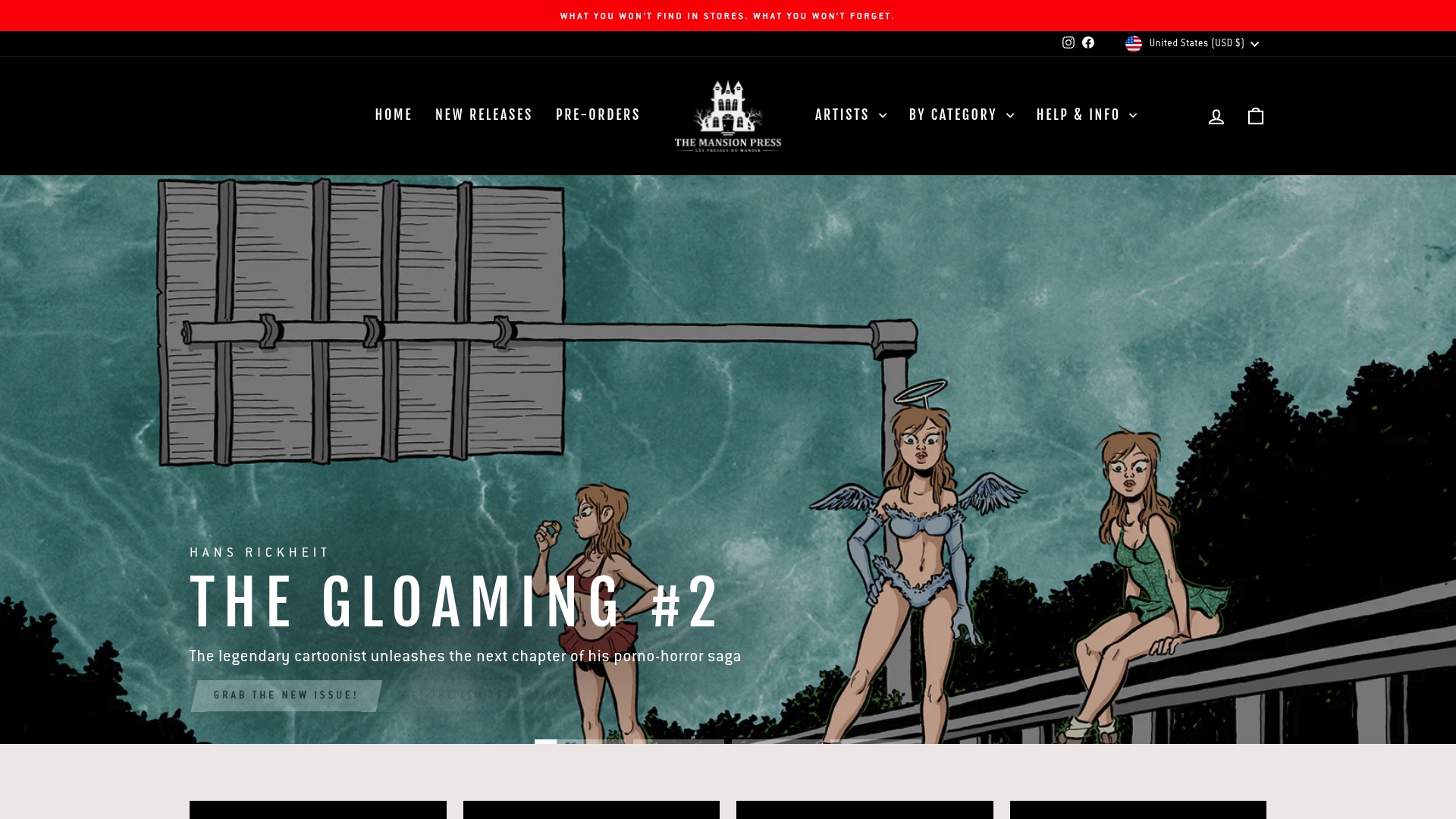7 Most Controversial Comics Every Collector Should Know
Did you know that more than forty percent of Americans have read a comic that faced censorship or legal challenges? Comics are much more than playful art or superheroes in capes. They often spark debates about culture, identity, and free speech. Exploring controversial comics reveals how these creative works can shape society while pushing artistic and social boundaries. Understanding the stories behind these disputes helps collectors and readers see comics as vital reflections of changing times.
Quick Summary
| Takeaway | Explanation |
|---|---|
| 1. Research historical contexts of controversial comics | Understanding the background enhances appreciation for the stories and their significance in society. |
| 2. Monitor legal challenges affecting comic availability | Staying informed about censorship helps collectors anticipate market trends and values. |
| 3. Invest in proper preservation techniques | Proper storage and documentation ensure that valuable cultural narratives are maintained for future appreciation. |
| 4. Acknowledge comics as cultural artifacts | Recognizing the social commentary within comics enriches the reading experience and promotes thoughtful discussions. |
| 5. Build collections that tell broader cultural narratives | Curating comics with significant stories fosters a richer understanding of cultural transformations and societal issues. |
Table of Contents
- Understanding Controversy In Comics: A Brief Guide
- Maus: Art, History, And Censorship
- The Killing Joke: Challenging Boundaries
- Persepolis: Cultural Dialogues And Debates
- Spawn: Redefining Independent Comic Success
- Fun Home: Identity, Family, And Free Expression
- Actionable Tips For Collecting Controversial Comics
1. Understanding Controversy in Comics: A Brief Guide
Controversy has been an intrinsic part of comic book history since their inception. Comics are not just colorful entertainment they are powerful storytelling mediums that challenge societal norms and provoke critical thinking.
The landscape of comic book controversy is complex and multifaceted. From legal challenges to ideological disputes comics have consistently pushed boundaries. Understanding violent comics and controversy in art reveals how these graphic narratives have navigated societal tensions.
Legal and social challenges have significantly impacted comic book publishing. Organizations like the Comic Book Legal Defense Fund have been instrumental in protecting artists rights and defending comics against censorship. According to academic research from digital commons law studies, comics have frequently been viewed as scandalous or obscene triggering numerous legal battles.
Modern comic book controversies often stem from deeper social dynamics. The Comicsgate movement exemplifies how ideological disputes can create significant industry tension. This alt right harassment campaign specifically targeted diversity and progressive representation in superhero comics demonstrating that controversy extends beyond artistic content into broader social conversations.
For collectors and enthusiasts understanding these controversies provides crucial context. These disputes reveal comics as more than entertainment they are cultural artifacts reflecting societal tensions. By appreciating the complex narratives and challenges comics have navigated readers gain a richer understanding of this dynamic art form.
Key insights for collectors include:
- Research the historical context of controversial comics
- Understand legal and social challenges that shaped comic book publishing
- Recognize comics as powerful social commentary tools
- Appreciate diverse perspectives represented in graphic narratives
2. Maus: Art, History, and Censorship
Art Spiegelman’s graphic novel Maus represents a groundbreaking exploration of Holocaust history through an innovative comic book narrative. This Pulitzer Prize winning work transforms complex historical trauma into a powerful visual storytelling experience that transcends traditional artistic boundaries.
The graphic novel depicts Jews as mice and Nazis as cats challenging conventional representational methods and creating a deeply metaphorical approach to understanding historical atrocities. Complete guide to banned comics in history reveals how works like Maus often face significant censorship challenges due to their provocative content.
Controversy surrounding Maus reached new heights in 2022 when McMinn County, Tennessee school board members voted to remove the book from eighth grade curriculum. Their objections centered on what they perceived as inappropriate language and a nude mouse illustration demonstrating how graphic narratives can trigger complex censorship debates.
Censorship mechanisms have targeted Maus across multiple jurisdictions. The Comic Book Legal Defense Fund documented instances of removal from libraries and bookstores internationally. Notably, Russia banned the book under laws prohibiting Nazi symbol display an ironic outcome given the works profound anti Nazi messaging.
For comic collectors and historians Maus represents more than a book. It is a cultural artifact that challenges societal memory. The graphic novel transforms Holocaust representation by using anthropomorphic characters to communicate profound human experiences making historical trauma accessible to broader audiences.
Key insights for understanding Maus include:
- Recognize its innovative narrative approach
- Understand its metaphorical representation of historical events
- Appreciate its role in challenging artistic and historical representations
- Acknowledge its significance beyond traditional historical documentation
3. The Killing Joke: Challenging Boundaries
Alan Moore’s The Killing Joke represents a watershed moment in comic book storytelling that fundamentally challenged narrative conventions and character development. This graphic novel emerged as a pivotal work that transformed perceptions of superhero storytelling by exploring psychological complexity beyond traditional heroic archetypes.
The narrative centers on the Joker’s origin story and his calculated assault on Batgirl Barbara Gordon a sequence that sparked intense debates about graphic violence and character representation. Understanding creepy comic book imagery and its impact helps contextualize how works like The Killing Joke push artistic boundaries.
What makes The Killing Joke truly controversial is its brutal deconstruction of heroic mythology. The graphic novel presents the Joker not as a simple villain but as a complex psychological entity exploring themes of madness trauma and the thin line separating sanity from chaos. This nuanced approach challenged readers expectations and provoked profound discussions about comic book storytelling.
The book’s treatment of Barbara Gordon particularly generated significant critical discourse. Her character transformation from Batgirl to Oracle represented a watershed moment in superhero narrative challenging traditional representations of disability and female heroism. Comic collectors recognize this work as a critical turning point in graphic narrative complexity.
Beyond its immediate narrative The Killing Joke became a lightning rod for broader conversations about artistic representation. Its unflinching exploration of psychological trauma and moral ambiguity demonstrated comics potential as a sophisticated storytelling medium capable of profound social commentary.
Key insights for understanding The Killing Joke include:
- Recognize its psychological complexity
- Appreciate its narrative innovation
- Understand its role in challenging comic book storytelling conventions
- Acknowledge its significant impact on character development
4. Persepolis: Cultural Dialogues and Debates
Marjane Satrapi’s graphic memoir Persepolis represents a groundbreaking exploration of personal history intersecting with complex political landscapes. This remarkable work transcends traditional storytelling by offering an intimate perspective on Iranian revolution and diaspora experience through powerful graphic narrative.
Understanding exploring dark comics themes for art lovers provides crucial context for appreciating graphic memoirs like Persepolis that challenge conventional narrative structures. Satrapi’s work emerged as a profound cultural intervention challenging Western stereotypes about Iran and presenting a nuanced human story against political turbulence.
The graphic novel sparked significant controversy through its unflinching depiction of revolution personal trauma and cultural complexity. Academic analyses highlight Persepolis as more than a memoir it is a sophisticated intercultural dialogue rooted in Persian artistic traditions. The book’s visual style deliberately connects to Persian miniature painting techniques transforming graphic storytelling into a powerful form of cultural expression.
Controversies surrounding Persepolis frequently centered on its graphic language and challenging imagery. Chicago Public Schools notably removed the book from seventh grade classrooms demonstrating how challenging narratives can trigger institutional resistance. These censorship attempts paradoxically amplified the books global significance highlighting its critical perspective on political and social realities.
Comic collectors recognize Persepolis as a landmark work that expanded understanding of graphic memoir as an artistic medium. By blending personal narrative with broader historical contexts Satrapi created a work that transcends national boundaries and challenges readers preconceptions about cultural identity.
Key insights for understanding Persepolis include:
- Recognize its role in challenging cultural stereotypes
- Appreciate its innovative narrative approach
- Understand graphic memoir as a powerful storytelling form
- Acknowledge its significance in global cultural discourse
5. Spawn: Redefining Independent Comic Success
Spawn emerged as a revolutionary force that fundamentally transformed the landscape of independent comic book publishing. Created by Todd McFarlane, this groundbreaking character represented a pivotal moment where artists could challenge mainstream comic book industry structures and create their own narrative universes.
Understanding underground comic creators provides crucial context for appreciating Spawn’s significant cultural impact. McFarlane’s decision to launch Image Comics challenged existing publishing models by giving creators unprecedented creative control and ownership of their intellectual property.
The comic book pushed boundaries with its dark antihero narrative featuring a supernatural protagonist who explored complex moral territories. Spawn represented more than just a character it was a statement about artistic independence. By rejecting traditional superhero archetypes the series introduced a grittier more nuanced approach to graphic storytelling that resonated with readers seeking alternative narratives.
Legal and cultural scrutiny often accompanies groundbreaking artistic endeavors. Spawn navigated these challenges by consistently delivering high quality storytelling that proved independent comics could compete with established mainstream publishers. The series demonstrated that creative vision and artistic integrity could translate into commercial success.
For comic collectors Spawn represents more than a collectible. It symbolizes a transformative moment in comic book history where artists could reclaim creative control and challenge existing industry paradigms. The series opened doors for numerous independent creators who saw a viable alternative to traditional publishing models.
Key insights about Spawn include:
- Recognize its role in challenging comic book industry structures
- Appreciate the importance of creative ownership
- Understand the impact of independent publishing
- Acknowledge its significance in expanding narrative possibilities
6. Fun Home: Identity, Family, and Free Expression
Alison Bechdel’s graphic memoir Fun Home represents a groundbreaking exploration of personal identity sexuality and family dynamics through the powerful medium of graphic narrative. This extraordinary work transcends traditional memoir by creating a complex multilayered examination of queer experience and familial relationships.
Understanding comics zines culture helps contextualize how works like Fun Home challenge traditional storytelling boundaries. Bechdel’s graphic memoir emerged as a profound artistic statement that dismantled conventional narrative structures while offering an intimate perspective on sexual identity and family complexity.
The book sparked significant controversy through its unflinching portrayal of LGBTQ+ experiences challenging institutional and societal norms. Fun Home became a lightning rod for discussions about free expression literary representation and artistic integrity. Its adaptation into a critically acclaimed Broadway musical further expanded its cultural impact demonstrating the works ability to transcend traditional media boundaries.
Academic and critical attention celebrated Fun Home as a transformative text that redefined graphic memoir. The work received numerous awards and appeared on multiple best of lists highlighting its significance beyond comic book circles. Its nuanced exploration of sexuality family trauma and personal discovery resonated with readers seeking authentic narratives.
For comic collectors and art enthusiasts Fun Home represents more than a book. It is a powerful cultural artifact that challenges societal assumptions about sexuality family and personal narrative. Bechdel’s innovative storytelling approach demonstrates the graphic memoir’s potential as a sophisticated literary and artistic medium.
Key insights about Fun Home include:
- Recognize its role in challenging narrative conventions
- Appreciate its nuanced exploration of identity
- Understand graphic memoir as a powerful storytelling form
- Acknowledge its significance in expanding cultural dialogue
7. Actionable Tips for Collecting Controversial Comics
Collecting controversial comics requires strategic thinking knowledge and a nuanced understanding of artistic and cultural landscapes. These rare and provocative works represent more than simple collectibles they are powerful cultural artifacts that challenge societal boundaries.
How to find obscure comics provides essential context for collectors seeking unique and challenging works. Successful collectors understand that controversial comics often represent critical moments of artistic and cultural transformation.
Legal awareness becomes crucial when collecting challenging comic works. The Comic Book Legal Defense Fund highlights the ongoing challenges surrounding publication and distribution of controversial comics. Collectors should stay informed about potential censorship trends that might impact availability and future value of these unique artistic statements.
Documented bans and challenges can significantly influence a comics collectibility. Works like Maus and Fun Home demonstrate how institutional resistance can paradoxically increase a publications cultural and monetary value. Savvy collectors recognize these moments as opportunities for strategic acquisition.
Authenticity and preservation become paramount when dealing with controversial comics. Proper storage documentation and understanding the historical context elevate a collection from mere acquisition to meaningful cultural preservation. Collectors should view themselves as custodians of important artistic narratives that challenge societal norms.
Key strategies for collecting controversial comics include:
- Research the historical and cultural context of each work
- Monitor legal challenges and censorship developments
- Invest in proper preservation techniques
- Build a collection that tells a broader cultural narrative
This table summarizes the key themes and insights regarding controversial comics and specific works like Maus and Persepolis, as discussed in the article.
| Topic | Key Insights | Significance |
|---|---|---|
| Comic Controversy | Comics challenge societal norms and provoke critical thinking. | They serve as cultural artifacts reflecting societal tensions. |
| Maus | Uses anthropomorphism to depict Holocaust history. | It challenges censorship and transforms historical representation. |
| The Killing Joke | Explores psychological complexity with the Joker narrative. | Redefined narrative conventions and character development. |
| Persepolis | Personal history intersecting with political landscapes. | Expands cultural discourse and challenges stereotypes. |
| Spawn | Independent publishing with creative control. | Demonstrates success outside mainstream industry paradigms. |
| Fun Home | Explores identity and family dynamics. | Challenges narrative conventions and expands cultural dialogue. |
| Collecting Strategies | Research context, monitor legal challenges, preserve properly. | Helps build a meaningful collection and preserve cultural narratives. |
Own A Piece Of Comic Book History With The Mansion Press
Are you searching for comics that truly challenge the norm and spark conversation? The article “7 Most Controversial Comics Every Collector Should Know” highlights the value of bold, boundary-pushing graphic novels. These stories are more than entertainment. They are cultural landmarks and, for collectors, rare opportunities to preserve history. At The Mansion Press, we understand that finding limited-edition, controversial works is not always easy. Many collectors face the challenge of authenticity, scarcity, and navigating censorship or legal hurdles—these pain points mean that the right resource is crucial when building a collection that stands out.

Discover our carefully curated selection of artbooks, rare comics, and collector’s items at The Mansion Press. Whether you are after a provocative classic or the next underground sensation, our online store connects you with independent artists and exclusive editions not found in traditional shops. Ready to expand your collection with genuine, conversation-starting works? Browse now at The Mansion Press homepage and see how you can claim your own piece of comic book history today before these unique editions disappear.
Frequently Asked Questions
What makes a comic book controversial?
Controversial comic books often challenge societal norms, engage in political discourse, or depict graphic content that may provoke censorship debates. To recognize a controversial comic, examine its themes and the reception it receives from audiences and institutions.
How can I assess the value of a controversial comic in my collection?
The value of controversial comics often increases due to their cultural significance and rarity. Evaluate factors such as condition, historical context, and any documentation of bans or censorship when determining its value to collectors.
What are the key considerations for preserving controversial comics?
To preserve controversial comics, focus on proper storage techniques, including using acid-free bags and boards, and maintaining a controlled environment. Regularly check the condition of your comics and make adjustments to their storage as necessary to prevent deterioration.
How do legal issues affect the collectibility of controversial comics?
Legal issues can greatly influence the collectibility of controversial comics, as bans can increase their demand among collectors. Stay informed about potential legal challenges and historical bans that may enhance the comics’ cultural narrative and market value.
What strategies should I use when collecting controversial comics?
Adopt a research-oriented approach by studying the historical and cultural context of each comic. Monitor legal developments and censorship trends, and aim to build a balanced collection that tells a broader cultural narrative over time.
Are there specific controversies that every comic collector should know about?
Yes, significant controversies include the censorship of works like Maus, Fun Home, and Persepolis. Familiarize yourself with the details of these controversies as they highlight important discussions around artistic expression and societal values.

